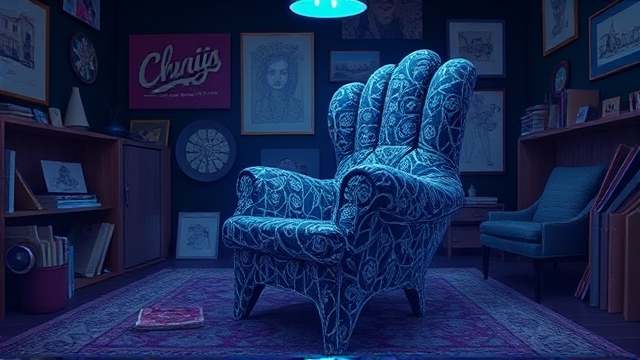Kelly Wearstler Interviews Surrealist Artist Pedro Friedeberg
Sitting across from the legendary Pedro Friedeberg in his Mexico City studio, a space that feels less like a workplace and more like a physical manifestation of a dream, I was immediately struck by the gentle, almost mischievous energy radiating from the 89-year-old artist. This wasn't just an interview; it was a conversation with a living archive of surrealism, a man who has spent nearly nine decades defiantly coloring outside the lines of convention.The air was thick with the scent of aged paper and oil paint, and every surface was adorned with his creations—intricate drawings that seemed to pulse with a life of their own, and of course, the iconic Hand Chair, a piece that has transcended its status as furniture to become a global symbol of artistic rebellion. Friedeberg, with a twinkle in his eye that belied his years, spoke not in grand artistic manifestos, but in quiet, profound anecdotes, recalling his early clashes with the rigid functionalism of his teachers at the Universidad Iberoamericana, a rebellion that led him directly into the orbit of European surrealists like Leonora Carrington and Remedios Varo who had found a home in Mexico.He described his work not as a conscious effort to be surreal, but as a necessary exorcism of the intricate, often absurd, visions that populate his mind, a universe where Baroque ornamentation, Aztec symbolism, and Escher-like architectural impossibilities coalesce into a singular, kaleidoscopic vision. We discussed the curious journey of the Hand Chair, which he created almost as a whimsical lark in the early 1960s, only to watch it be copied, celebrated, and commodified across the world, becoming both his blessing and his curse, a constant reminder of the fine line between artistic signature and pop culture phenomenon.He mused on the nature of legacy, expressing a quiet bemusement at being labeled Mexico’s first-wave surrealist, a title he wears lightly, more focused on the daily act of creation than on his place in art historical textbooks. For him, the act of drawing remains a meditative, almost spiritual practice, a way to impose order on the beautiful chaos of his imagination, a process he continues with the same fervor he had as a young man.This encounter was a powerful reminder that true artistry isn't about following trends, but about the relentless, personal pursuit of a unique vision, a lesson that resonates far beyond the canvas and into the very way we choose to live our lives. Friedeberg’s world is one where logic is optional and wonder is mandatory, and to step into it, even for an hour, is to be reminded of the transformative power of unbridled creativity.
Latest News
In a move that feels both long overdue and perfectly timed for the current digital epoch, VICE has officially thrown its hat into the ring of creator economy
2 days ago3 comments
The rhythm of the music industry has hit a discordant note, as the legendary Busta Rhymes, an artist whose career has been a masterclass in lyrical dynamism
2 days ago6 comments
The narrative power of metal music, a truth long understood by its devotees, finds its ultimate expression in the concept album, a format where bands trade
2 days ago8 comments
Darby Allin is feeling alive after his return from Mt.
2 days ago12 comments
In the grand, unpredictable symphony of popular music, a song's legacy is never just about the notes on the page or the voice in the recording; it's about the
2 days ago3 comments
The air in Kobe’s Glion Arena crackled with a rare, almost archival energy on that October night, a feeling that transcends the usual stadium roar—this wasn't
2 days ago5 comments
In a move that echoes the delicate diplomatic choreography more commonly seen in United Nations assemblies than in song contests, the European Broadcasting
2 days ago7 comments
The venerable halls of Christie's, a temple to art and antiquity where whispers of gavels have consecrated the exchange of cultural totems for generations,
2 days ago7 comments
JA
Jamie Larson123k2 days ago
this is so inspiring tbh, feels like a reminder that the most iconic stuff comes from just following your own weird vision, can't wait to see what's next for artists like him 🚀
0
JA
Jamie Larson123k2 days ago
wow this is such a lovely read, really makes me want to go create something
0
JA
Jamie Larson123k2 days ago
this is cool and all but wait what does this have to do with tech tbh idk why this is in my feed smh
0
